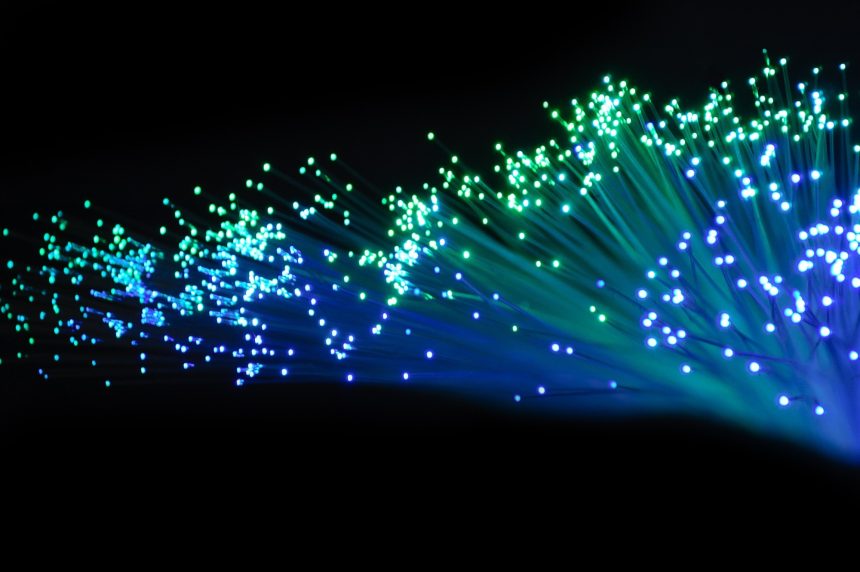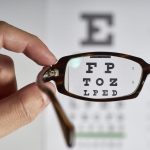Fiber optic lighting has truly developed into all sorts of products especially Stage Light Manufacturer.
- Fiber Optic Lighting 101: The Fundamentals
- Let There Be Light: End Emitting Fibers
- The Side Glow: Side Emitting Fibers
- Under the Umbrella of Side and End-Emitting Fibers: Other Optic Variants
- Special Applications: Fiber Optic Fabrics
- Home Lighting Applications
- Your Guide to Fiber Optics: The Lighting Edition
A source of creative illumination to wearables and accessories, fiber optics hypnotize anyone interested in electric workings. Due to its complexity and the sheer number of applications it could grant different industries.
In this case, we’re not talking about the fiber optics that carry data from point A to point B. We’re referring to the clear and colorless fiber optics. Those that can shift your light’s color patterns. And even undulate the emitted light source if they’re dynamic or programmable.
However, if you’ve never heard about fiber optic lighting, no worries, you’ve come to the right place. Read on for our full breakdown of the fundamentals of fiber optic lighting. We’ll start with the basics, then cover the different types of fiber optic lighting you’ll find on the market.
Fiber Optic Lighting 101: The Fundamentals
You might have heard about plastic fibers that are specifically designed for lighting. Or the glass fiber ones that are responsible for transmitting data over long distances.
The two follow the same rule of physics. A source of illumination, such as an LED or a laser, shines into one end of the fiber optic thread and exits at the other.
A typical “end emitting” fiber optic for lighting is a long, thin strand of plastic. It has a highly transparent core and an exterior coating known as cladding. (A “light pipe” is another term for this sort of construction.)
The transparent inner core allows light to pass freely along the fiber’s length. But, the cladding works as a one-way mirror. It confines any light that attempts to escape by reflecting it into the core in a process known as complete internal reflection.
This combination of core and cladding allows light to travel extended distances. Going along with the fiber, even around bends, emerges almost as bright as the illumination source at the other end.
However, depending on the fiber’s quality, some light may deteriorate or be lost along the route. Although it might seem like it’s purely a flaw, there are some fiber optics that can take advantage of this light degradation. By letting a small amount of light escape through the cladding, all across the fibers’ length results in a uniform glow that resembles a neon tube. Fiber optics with “side emission” fibers are known as “side-emitting” fiber optics.
We’ll break down those specific fibers, one category at a time.
Let There Be Light: End Emitting Fibers
End emitting and side-emitting fibers have slightly distinct appearances. That’s why they’re suitable for different applications.
End emitting fibers (also known as end glow or end light) are the most common fiber optics. With brilliant sources of light at the ends and very little light escaping throughout the strands. They’re generally minuscule, measuring between.25 and 3mm in diameter. They are also usually stiffer than fibers that emerge from the sides.
You may direct individual points of light far away from a single light source using end-emitting fibers. Other projects employ the fibers’ ends to distribute light, specifically from a few lighting sources, into a slew of small stars.
End emitting fibers do, however, leak a little amount of light down the strands, which becomes visible in the dark when assembled into bunches. You can also nick or abrade the fibers to generate bright spots along their lengths.
The Side Glow: Side Emitting Fibers
End emitting fibers are often bigger and more flexible than side-emitting fibers (also known as side glow or sidelight). They appear to be available in diameters ranging from 2mm to 12mm.
Light gradually escapes throughout the whole length of the fiber, providing a very uniform glow, much like a neon tube or el wire, because of the way they are manufactured, with a coating that is purposely less effective.
However, as shown in the second shot, some light escapes from the fiber’s end, resulting in a brilliant spot of light where the fiber is severed.
The light source’s intensity determines the intensity of the fiber’s glow. A 1 watt LED or a laser, for example, will light the fiber more than a neopixel LED. The fiber’s glow is brightest close to the source of lighting and fades or discolors progressively as more light escapes down the length of the fiber.
You’ll find that around 5 feet away from the light source, the glow of a sidelight fiber optic illuminated with a standard neopixel LED at maximum brightness becomes difficult to perceive and somewhat yellowed.
Under the Umbrella of Side and End-Emitting Fibers: Other Optic Variants
Now that you have a basic understanding of the differences between end glow and side glow, it’s time to look at the other fiber optics you might run into.
There are four common types: the multi-strand end glow cable, the sparkle cable, the multi-strand “side glow” cable, and the solid core end glow.
The Multi-Strand End Glow Cable
It is made up of a bundle of end glow fibers that have been enclosed in a plastic shell for protection. We’ve seen them in clear casings, which allow you to see the fibers all the way down the cable. As well as thick black casings, which block all light except for the light that comes from the ends of the fibers.
A typical configuration of these cables has fibers of the same diameter. However, we have seen cables with a few fibers of slightly varying sizes to provide diversity in performance (they are designed for making star effect ceilings).
Fiber optics purchased in this shape are useful if you want to use the fiber in bundles and want to ensure that all of your fibers bend in the same direction as one another. When it comes to removing the fibers from the shell, this can be a tough process that frequently nicks the fibers.
You’ll find that Ellumiglow has a wide collection of multi-strand end glow cables that you can practically integrate into anything.
The Sparkle Cable
This type of fiber optic lighting is exactly as it sounds.
To generate a sparkling appearance, clusters of end glow fibers were purposely nicked along the strands wrapped in a transparent casing. We think they’re a little corny, but I’m sure they’d work well in other situations.
The Multi-Strand Side Glow Cable
The fibers inside these transparent cables are twisted. Unlike the end glow cables, which have straight fibers. It presumably enables more light to escape throughout their length.
They appear to be meant for interior décor lighting. But, after ordering and testing a sample of these, we don’t see how they are much better than huge solid core side glow fibers. Also, they don’t appear to perform very well. They are not suitable for wearable crafts.
The Solid Core End Glow
On the other end of the fiber spectrum, we have the solid core end glow ones.
Single strands with a diameter of up to 14mm are enclosed in a black PVC casing. We haven’t tried them yet, but they appear to be more like a side glow fiber wrapped such that light only comes out of the end.
They’re primarily utilized to direct light to precise places in displays and water features. They could also be helpful in wearables for a similar purpose.
Special Applications: Fiber Optic Fabrics
Illuminated fabric is the newest trend on the block.
Fiber optics are being woven into textiles by a few businesses. In principle, this is a fantastic idea, but the outcomes haven’t really met our quality standards yet.
End glow fibers that have been intentionally abraded to emit light down the length of the strands are utilized in these textiles, and the resulting fabric is stiff and abrasive.
The fibers are generally weaved in one direction (only warp or weft) and must be packaged and linked to a light source at one end. If you want to keep the glow in all the fibers, you can only cut the fabric in certain ways, which means you can only use it in clothes with specific pattern forms. You can work all of this around, but it isn’t the most straightforward material to work with.
We also think the fabric’s look can be a touch cheesy if it’s not applied correctly. We’ve seen it lit up with moving lasers or programmed lights to give it a more dynamic, understated appearance.
You may also achieve beautiful effects by strategically abrading the fibers to add light patterns to the cloth. I haven’t done much with this material, but it looks like it may be a fun option for wearable crafts, and I’m sure it will continue to evolve in new and fascinating ways.
Home Lighting Applications
Lighting fiber optics has a wide range of applications, from simple to highly complicated, and may drastically alter the appearance of your project. When choosing your lighting option, remember that the stronger the light, the more noticeable the fiber optic illumination will be.
Also, from a personal aesthetic standpoint, we believe that staying away from out-of-the-box primary LED hues like green, blue, and red keeps a fiber optic installation from seeming corny. For a more delicate and attractive appearance, we generally use blended or de-saturated colors.
It might seem a bit intimidating at first, but some types of fiber-based lights can add so much character to your space.
LED Lights
Simple battery-operated lights are a suitable choice for extremely simple fiber optic illumination.
They’re easy to attach to a bundle of fibers (or a single big fiber) using heat shrink tubing and adhesive because of their form. Several pre-packaged lighting solutions like this may offer your fiber optic installation with easy and stunning illumination.
Dynamic and Programmable LEDs
However, programable lighting, or at the very least a light source that has been pre-programmed, is required to use fiber optics’ dynamic lighting capabilities fully.
Using individually controllable RGB LEDs and a microcontroller is one very straightforward method to achieve this. Even if you only have a rudimentary understanding of Arduino programming, it’s quite simple to discover intriguing lighting programs online and put them into your microcontroller.
Small Lasers
Small laser modules are another alternative for lighting your fiber optics. It’s been done on a handful of projects, and it certainly brightens up the fibers and makes them more noticeable in the sun.
Yet, one limitation is the restricted number of laser colors accessible. I’ve seen the best application of lasers in fiber optics when someone connected a spinning laser to fiber optic fabric, causing different colors and patterns to appear on the fabric’s surface.
Using Pre-Made Fiber Optics
You may also purchase ready-to-use fiber optic lighting products. People have used a fiber optic whip, which comes pre-assembled with a huge bundle of fibers linked to a bright RGB LED with various pre-loaded programs, to make dresses and jackets. These whips are wonderful items in many respects, but the battery life isn’t as good as it might be, and the form and size of the whip aren’t ideal for wearables.
You may readily put smaller, less expensive items like glowbys and fiber optic centerpieces into wearables. Still, they don’t allow you to alter the color of your lights and are frequently inexpensive and poorly built. Fiber optics may be the lowest common denominator, but with a little imagination, they can still be a fun touch to your costume.
Your Guide to Fiber Optics: The Lighting Edition
At this point, you might be feeling a bit overwhelmed by the huge varieties you can choose from when it comes to fiber optic lighting.
We hope that our thorough explainer has shed some light (definitely intended) on how fiber optics work, as well as the different kinds available to you and their uses and implementations.
And, if you liked our article, we’re pleased to say that there is so much more where that came from. Check out our technology section for all the lighting physics your heart desires.














